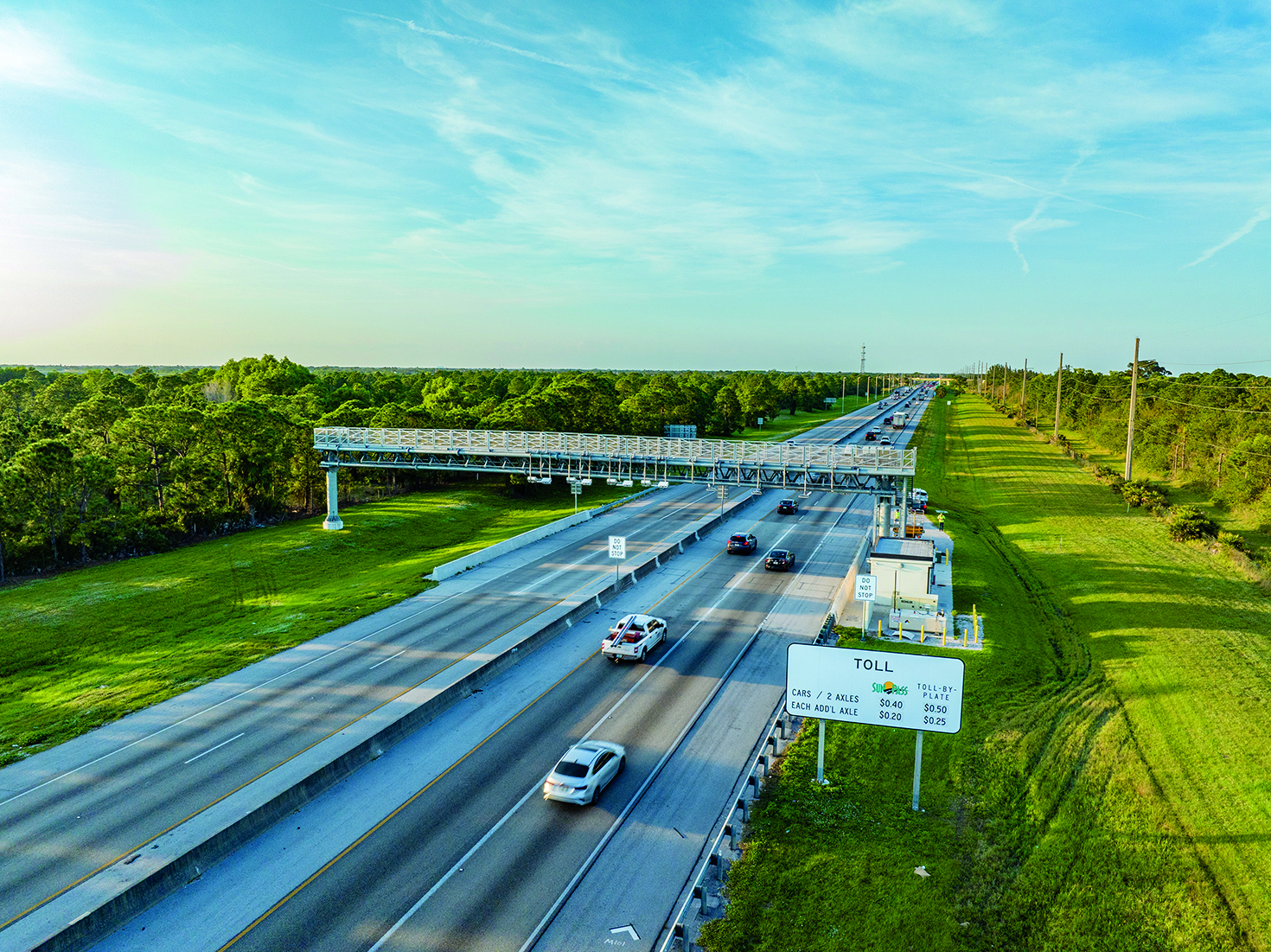
New efficiencies and enhanced safety gained through all-electronic tolling.
DESIGNER
2022
Florida’s Turnpike Enterprise achieved a major strategic initiative — converting 312 miles of its mainline to all-electronic toll collection and realizing a long-held vision to increase safety and mobility.
FTE implemented the conversion to AET in phases, with the largest, most complex phase completed overnight in five hours. Overnight conversions to AET are impressive, especially when they cover 155 miles and 13 interchanges on one of the country’s most heavily traveled systems. What’s even more impressive is to deliver it under live traffic conditions with no customer complaints.
“The truest measure of success is the customer experience, and the customer experience was seamless,” said Nicola Liquori, FTE executive director and CEO. “Converting 155 miles to AET and doing it overnight from a customer perspective is tremendously difficult to orchestrate and was done, in my mind, to perfection.”
Changing the state of driving
The roots of FTE’s conversion to AET began in 1999, when the agency introduced SunPass® transponders as an alternative to cash payment. As more customers discovered the convenience of electronic toll collection, the need for in-lane cash collection steadily decreased, and AET became a viable option for increasing throughput and capacity. Later, in the early 2000s, FTE made official its intent to convert the entire approximately 500-mile system to AET.
“By eliminating the need to stop and pay tolls, we could offer customers greater safety and mobility, reducing vehicle emissions and fuel consumption,” Liquori said.
Plus, AET would create internal efficiencies FTE could pass on to the general public.
“Electronic toll collection requires less overhead, which results in more toll revenues being reinvested in transportation improvements, which, ultimately, benefits everyone,” Liquori said.
Perfecting the process
In October 2010, after approximately 10 years of building the SunPass brand, FTE implemented the first of its planned phased conversions of its system. Throughout its journey HNTB has led and supported FTE in the conversion of the Suncoast Parkway, Northern Coin portion of the Turnpike mainline, and the Polk Parkway. While “AET conversion” may be a commonly used industry term, these projects were far from common. Each phase had nuances that required their own unique approach and implementation plan.
In late 2021, after successfully executing all other phases on the Turnpike mainline, FTE with HNTB and key stakeholders embarked on AET 8, the largest, most complex of them all, the Ticket System, stretching from milepost 88 to milepost 236.
“We left AET 8 for last because it was the most complex,” Liquori said.
The $107 million conversion was, indeed, massive. It involved:
- Changing FTE’s toll collection method, removing cash
- Demolishing two mainline toll plazas and plazas from 12 interchange ramps
- Erecting 12 free-flow, mainline AET toll gantries
- Introducing a new tolling scheme
“We went from being an origin-destination system where travelers stop and get a ticket to a barrier system where they pass under a gantry at highway speeds,” Liquori said.
In the months leading up to AET 8, FTE launched an information blitz, educating customers about the upcoming changes, the benefits of SunPass and where to purchase the transponders. Meanwhile, Bryan Frohlich, HNTB’s program manager, assembled the multidisciplinary stakeholders involved in the conversion. This diverse team included the construction contractor, construction inspectors, communications and marketing team, finance, tolls roadside program, tolls back office and revenue collection services.
The planning for the AET 8 conversion was years in the making. Six months out, the team began execution of its detailed final implementation plan and met weekly with stakeholders. Six months may seem like a short lead time given the scope, but for Frohlich, it’s the “sweet spot” of planning.
“Stakeholders stay engaged,” he said. “There is less meeting fatigue.”
Of course, it helped that HNTB has significant experience on toll system conversions, and FTE had seven successful conversions under its belt. The team was well-rehearsed and 100% prepared. Because of the depth of their experience, everyone also knew the unexpected can and will happen.
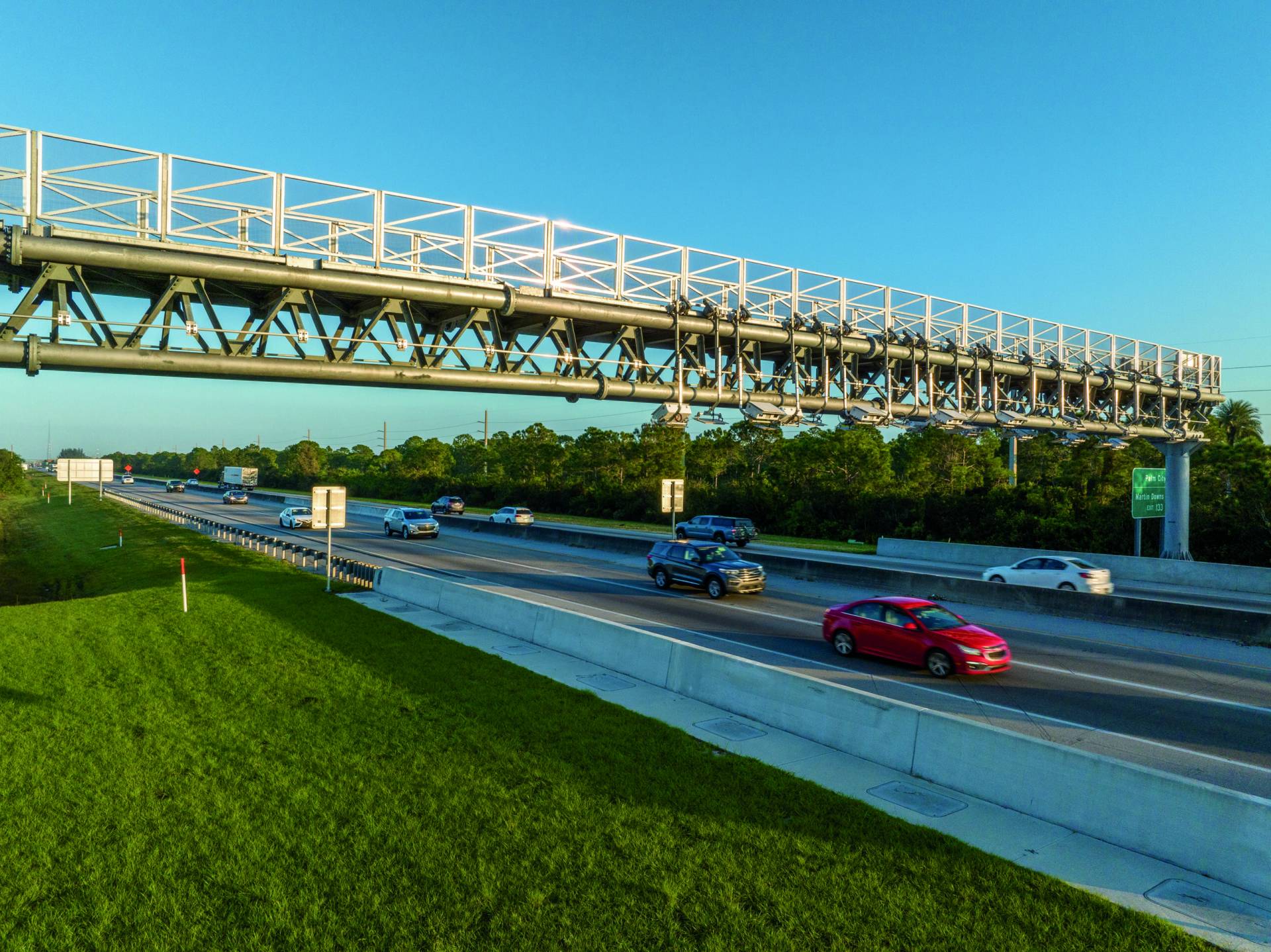
“The truest measure of success is the customer experience, and the customer experience was seamless. Converting 155 miles to AET and doing it overnight from a customer perspective is tremendously difficult to orchestrate and was done, in my mind, to perfection.”
FTE Executive Director and CEO
Resolving 11th-hour challenges
The first potential obstacle came approximately 3 weeks before AET 8’s anticipated launch of Friday, Nov. 12, 2021, when HNTB received word to advance the conversion start to Sunday, Nov. 7, at 9 p.m. The advancement in schedule was customer centric, to ensure there were no potential impacts to customers traveling over a holiday.
“It was okay,” Frohlich said. “Our team was nimble. We adapted.”
HNTB had sectioned the 155 miles of mainline into four zones and assigned a conversion team to each one.
“Every hour beginning at 9 p.m., the conversion teams would close lanes at their assigned toll plazas, power down the equipment, cover cash signs and uncover “Do not stop” signs” said Arthur Dailey, HNTB construction manager.
Early on the morning of Nov. 8, if everything was going according to plan, the teams would barrel off the remaining open lanes at each toll plaza and redirect traffic to the newly converted lanes. At this point, the old cash plazas were shutdown and the AET plazas were put into production.
“The simplicity of the strategy blew everyone away,” Frohlich said.
At 7:30 p.m. the night of conversion, another curveball came when Frohlich learned that several of the remote toll plazas were unattended along the conversion route.
“We had to rewrite the playbook at those plazas,” Frohlich said. The sequence in which lanes were being shutdown and construction activities occurring had to be completely reworked for these locations.
The conversion team assigned to the zone created a makeshift desk on the hood of a truck in a plaza parking lot with plans spread out and red pens marking changes.
“They were taking pictures of the marked-up plans and emailing them, saying, ‘This is how we are going to make it happen now,’” Frohlich said. “I was super proud of our team.”
The only other challenge was a minor configuration issue at several roadside plazas, detected by the team’s hypercare plan, which was an intensive review of the transactions from the newly implemented plazas starting at the roadside all the way to the customer statements. The team quickly found the anomaly, identified the root cause and resolved it.
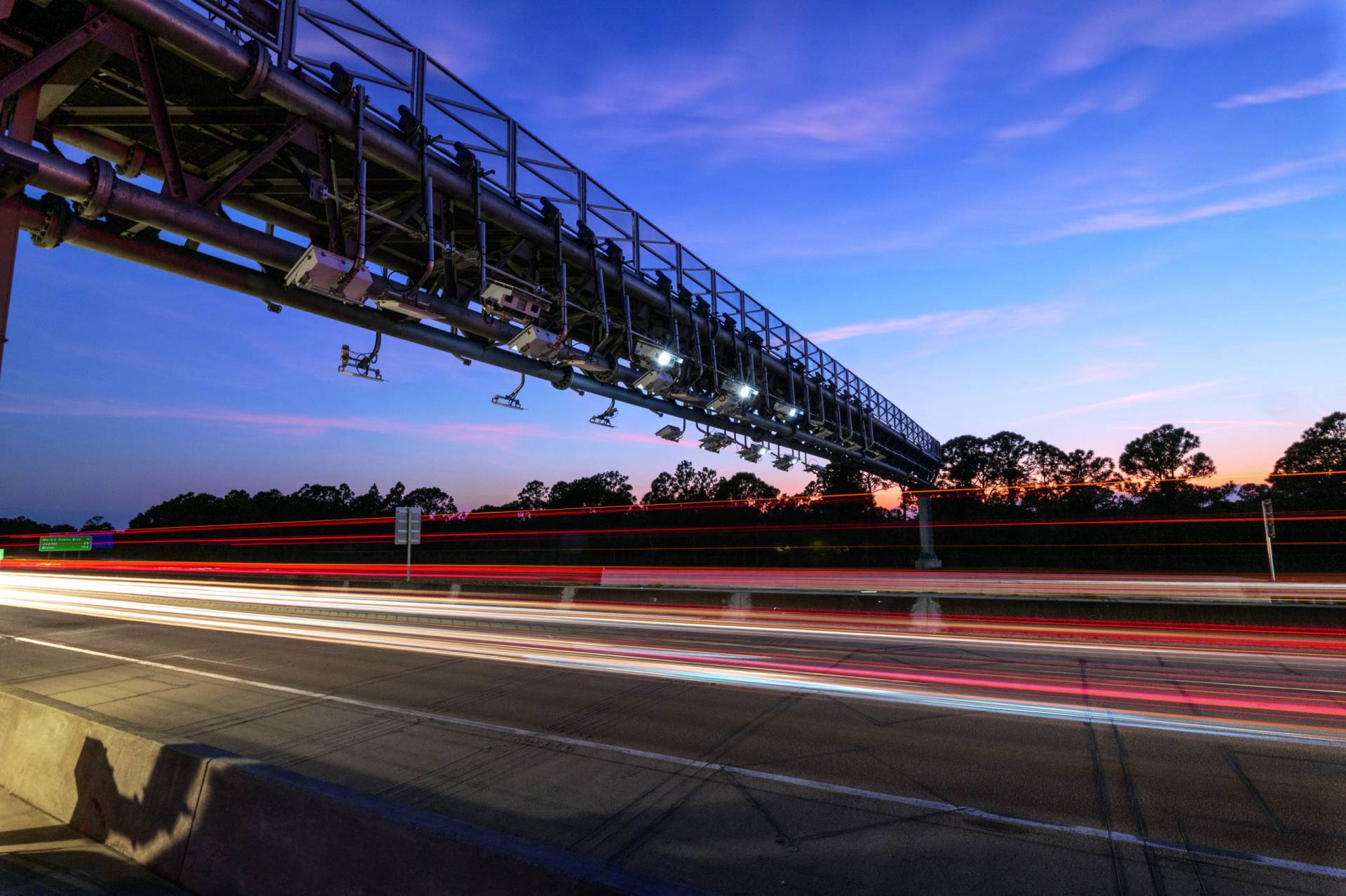
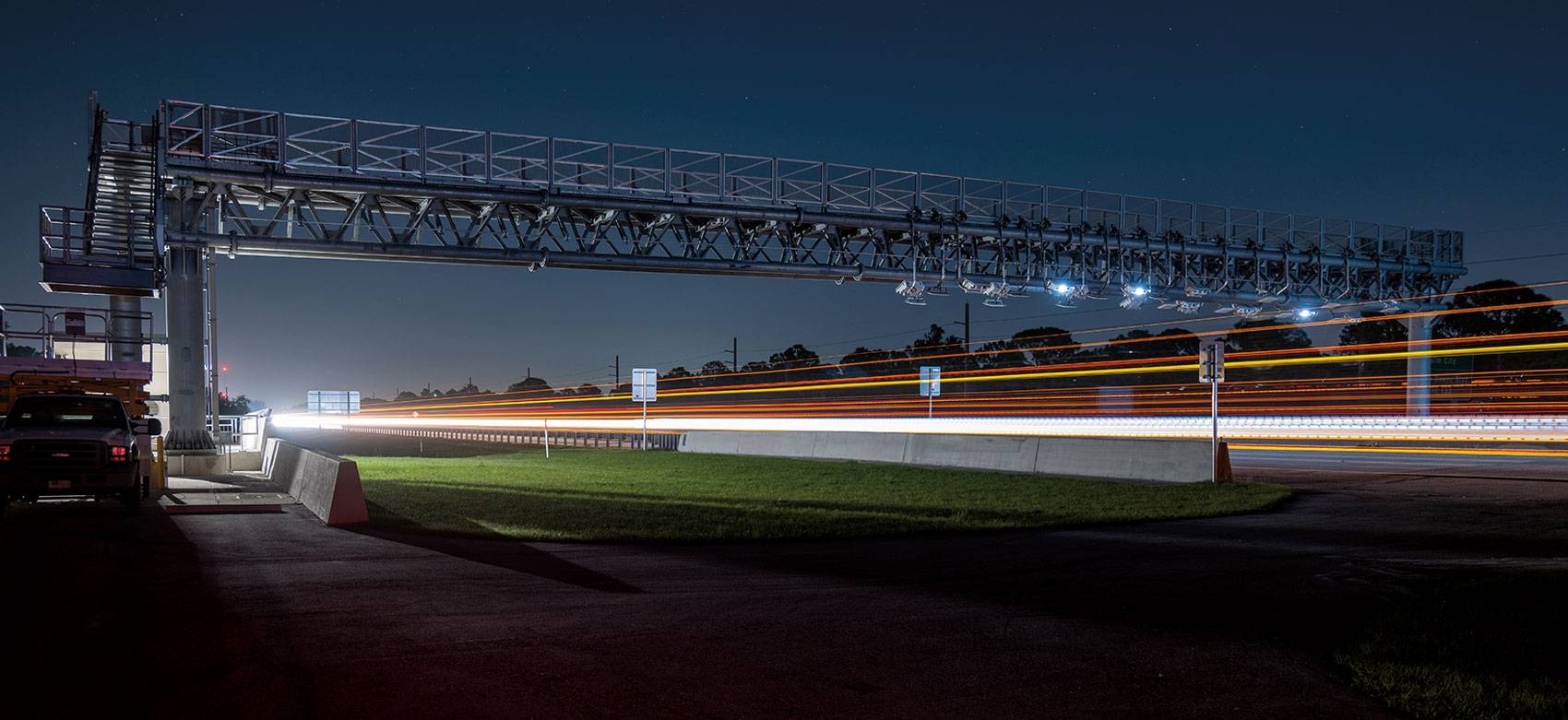
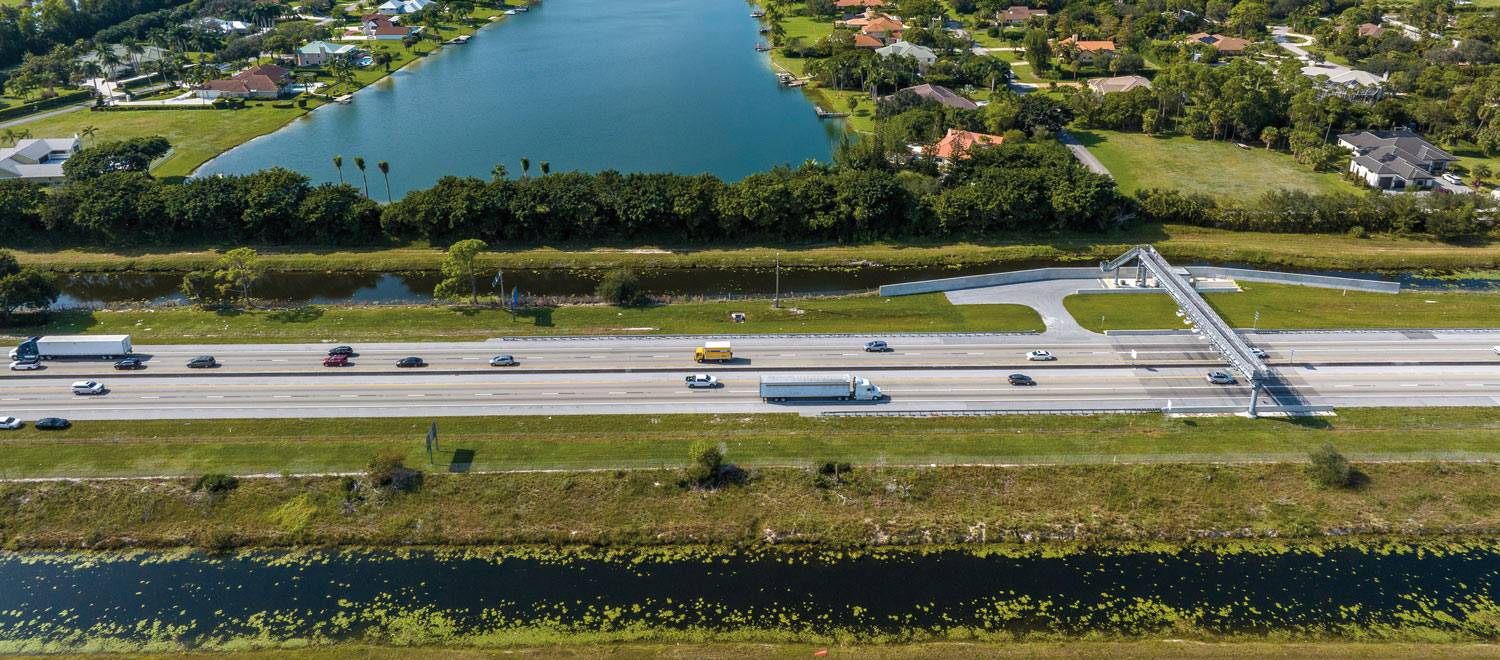
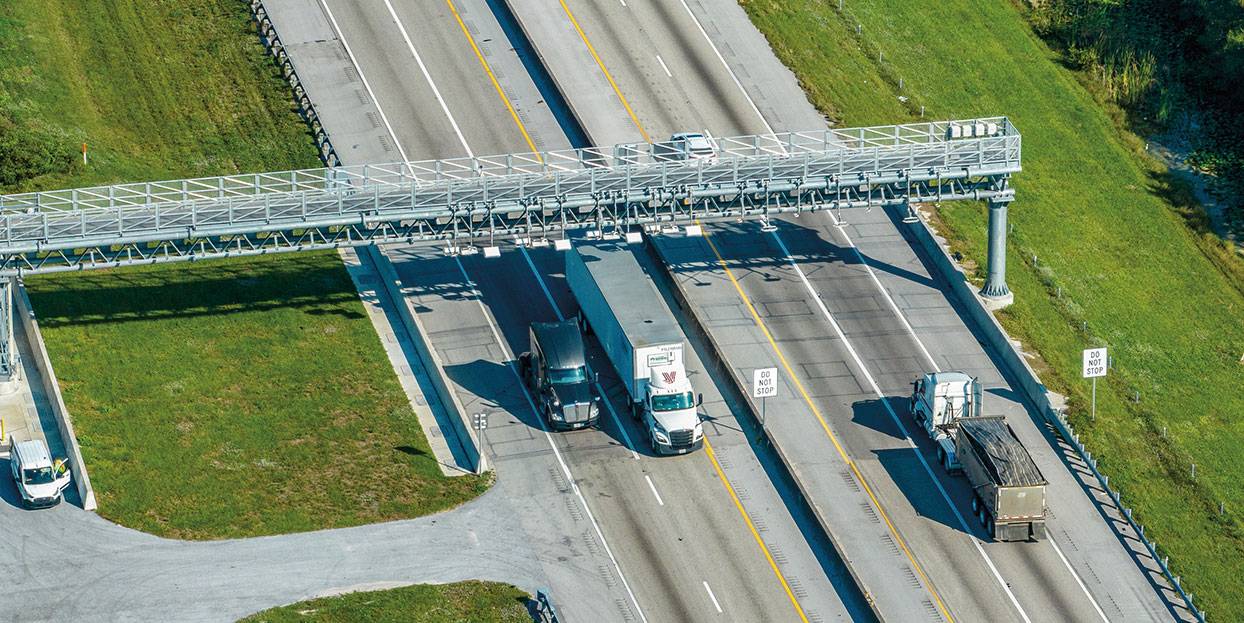
“The customer never knew there was a problem,” Liquori said. “That takes knowledge. It takes experience. It takes a focus on customer care, and it takes a lot of communication.”
By 2 a.m., Nov. 8, five hours after AET 8 began, the 155-mile segment was totally cashless. The entire 312 miles of Florida’s Turnpike Mainline and ninety percent of its system had been converted to AET, bringing to life the agency’s 20-year vision to improve customer safety and efficiency.
By all accounts, the transition from cash and electronic tolling to AET was flawless. Frohlich, said he always strives for flawless conversions. While all projects have their challenges, it is important for them to be successful and to be seamless to the customer. The two key components in this success are implementation preparation and post-implementation monitoring.
“Other toll agencies considering cashless tolling should engage with Florida’s Turnpike Enterprise,” Frohlich said. “Florida’s Turnpike Enterprise has a level of expertise and knowledge to assist other agencies. They are a leader in AET conversions.”
SEE MORE ARTICLES
MORE DESIGNER STORIES
ALLEGIANT STADIUM
CASEY ARBORWAY
CHAMP CLARK BRIDGE
ORLANDO INTERNATIONAL AIRPORT, SOUTH TERMINAL
US 290 Program
